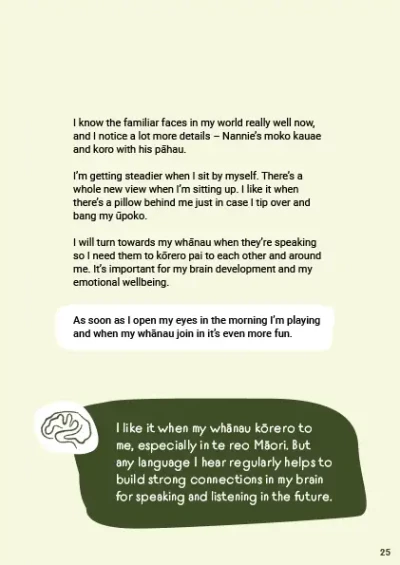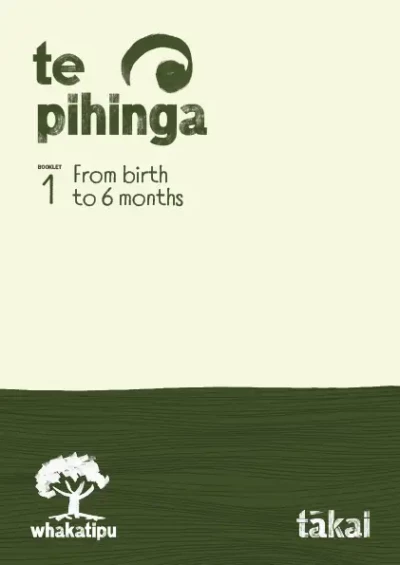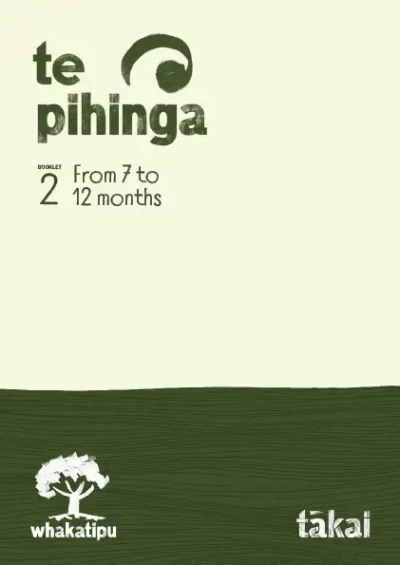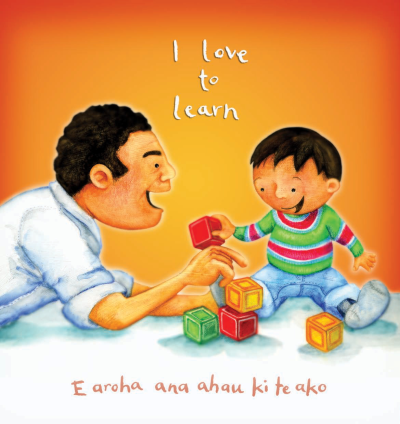
Brain development for babies
The video 'Building brains' is designed to increase understanding of brain development during the early years of life and the importance of interaction between tamariki and their caregivers.
Watch this 3-minute video created by Moana Research. It talks about how a child's early experiences influence how their brain develops. Genes provide the basic blueprint, but experiences affect how that plan unfolds. What happens to a child influences whether their brain will provide a strong or weak foundation for their future learning, behaviour, and health.
Building Brains (transcript)
[Graphic: Moana Research logo]
[Text on screen: Building brains]
[Text on screen: Adapted with permission from the Centre on the Developing Child at Harvard University in collaboration with Brainwave Trust Aotearoa]
[Graphic: Centre on the Developing Child, Harvard University logo. Brainwave Trust logo]
Voiceover:
Before birth, and in their first few years of life, what a child goes through helps to shape the way their brain develops. A child's genetics provides a plan but how the child sees, hears, and feels the world affects how that plan unfolds. What happens to a child can either help or get in the way of their healthy development.
Babies are born with billions of brain cells called neurons, but only some of these are connected with each other at birth. Over the first few years many more neurons connect, and they send electrical signals to communicate with each other. These connections form pathways and they become the foundations of how the brain is built. These pathways increase faster and get stronger the more they are used.
A child's experiences and relationships with others influence which pathways and which connections get more use. Those that are used more grow stronger and can last longer. For example, the more talking, stories, and singing a child hears the stronger their language skills will be.
Meanwhile connections that are used less fade away through a normal process called pruning. Well-used pathways allow messages to travel quickly across the brain. Simple pathways form first, providing the building blocks for new more advanced pathways. Just like learning to talk, first a child makes sounds, then they can say words then sentences and so on.
[Image on screen: side profile of a brain]
[Text on screen: Feelings, movement, language, memory, emotion, behaviour]
Voiceover:
In this way neurons develop strong connections for feelings, movement, language, memory, and many other things while our children are very young. Like a well-used path with more use these pathways become stronger and connect to other parts of the brain faster.
Each skill is connected to the others. Like building a house where strong foundations are important to support the rest of the house, a child's experiences in the early years lay the foundations for their later learning and well-being. It is never too late to start building these pathways with your child.
[Music]
[Graphic: Moana Research logo]
[Text on screen: www.moanaresearch.co.nz]
Getting familiar with the video before you watch it with whānau will help you to support the discussion better. Arrange things with whānau ahead of time so that you have the right technology to view the video.
Learning language
Whakatipu booklet Te Pihinga 1 (page 25) talks about how babies can learn any language as long as it’s spoken regularly with them.
And if there are 2 or more languages spoken regularly, then they’ll learn those languages.
- What does the video say about the importance of talking to a baby?
- What do we know about how we should talk to babies?
The amazing brain
Invite whānau to look for the brain development icons scattered throughout the Whakatipu booklets Te Pihinga 1 and 2. They describe what’s happening for pēpi in their hinengaro mīharo (amazing brain).
Ask whānau:
- What was the most interesting thing you learnt in the video?
- What do you understand about the idea that some experiences can help while others get in the way of healthy tamariki brain development?
- How might watching this video influence how you raise your tamariki?
- Did the video change any ideas you had about how tamariki develop?
Tell whānau about Brainwave Trust(external link) and suggest they read some of the articles on the website that interest them.
Brainwave Trust has a team of kaiako who run workshops about child and brain development for community groups – you may wish to organise a speaker to visit your community and invite the whānau you work with.
Helpful resources for whānau
-

Brainwave Trust Aotearoa
Visit the Brainwave Trust website for more information and articles about early brain development.
-
Growing great brains<
Growing great brainsJason Tiatia from the Brainwave Trust shares some tips on helping pēpi grow great brains.
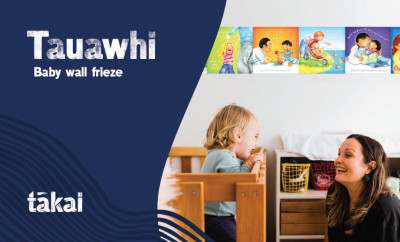 pdf 8.1 MB
pdf 8.1 MB
